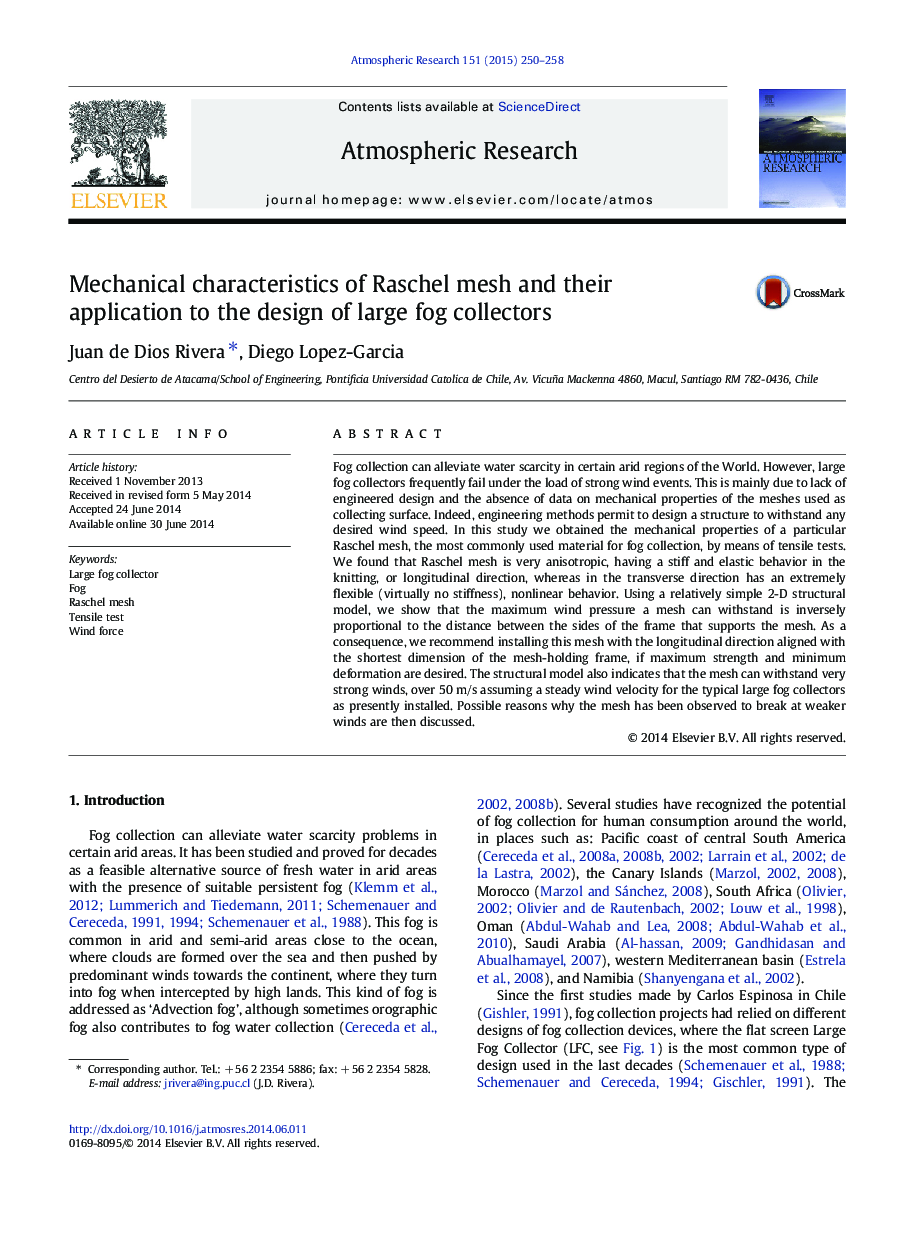| کد مقاله | کد نشریه | سال انتشار | مقاله انگلیسی | نسخه تمام متن |
|---|---|---|---|---|
| 4449788 | 1620522 | 2015 | 9 صفحه PDF | دانلود رایگان |
• This study focuses in the structural analysis of the mesh of large fog collectors
• The mechanical properties of a particular Raschel mesh are obtained by means of tensile tests
• Test results show that the mesh is very anisotropic, being more resistant and elastic in the knitting direction
• Results of a simple, static, 2-D structural model show that the mesh can withstand winds of over 40 m/s
• This does not correspond to practical observations, that show breakage with lesser winds
• We conclude that stress concentration and dynamic effects must be considered for a more realistic model
Fog collection can alleviate water scarcity in certain arid regions of the World. However, large fog collectors frequently fail under the load of strong wind events. This is mainly due to lack of engineered design and the absence of data on mechanical properties of the meshes used as collecting surface. Indeed, engineering methods permit to design a structure to withstand any desired wind speed. In this study we obtained the mechanical properties of a particular Raschel mesh, the most commonly used material for fog collection, by means of tensile tests. We found that Raschel mesh is very anisotropic, having a stiff and elastic behavior in the knitting, or longitudinal direction, whereas in the transverse direction has an extremely flexible (virtually no stiffness), nonlinear behavior. Using a relatively simple 2-D structural model, we show that the maximum wind pressure a mesh can withstand is inversely proportional to the distance between the sides of the frame that supports the mesh. As a consequence, we recommend installing this mesh with the longitudinal direction aligned with the shortest dimension of the mesh-holding frame, if maximum strength and minimum deformation are desired. The structural model also indicates that the mesh can withstand very strong winds, over 50 m/s assuming a steady wind velocity for the typical large fog collectors as presently installed. Possible reasons why the mesh has been observed to break at weaker winds are then discussed.
Journal: Atmospheric Research - Volume 151, 1 January 2015, Pages 250–258
